|
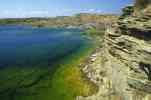
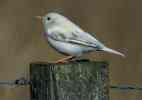

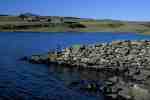

Biodiversity is one of the ‘buzz’ words that seems to
pop up all the time these days. It simply means the "variety of life on
earth”. This includes all living things, from the tiny garden ant to the
giant redwood tree. You will find biodiversity everywhere, in window boxes
and wild woods, in roadsides and rain forests, on seashores and snow
fields. The concept is a relatively new perspective on the natural world
and how we as humans relate to it, which has developed over the last
couple of decades.
In 1992 the UK was a signatory to the
UN
Convention on Biological Diversity at the Earth Summit in Rio. This
committed the signing countries to conserving the earth's biodiversity,
but to do so in the context of sustainable development and the needs of
local communities. It argues the natural world is a precious asset, and we
are encouraged both to maintain it for the long-term and to realise and
equitably share its benefits.
In Caithness, efforts have been made to work towards
this goal. Education is an important tool as many people are unaware of
the wonderful array Biodiversity surrounding them on a day to day bases.
With such a range of different habitats and healthy environments, the
existing biodiversity in Caithness is already rich and so we wish to
sustain this and try to encourage and protect this precious asset for
future generations to enjoy.
The Caithness
‘Biodiversity’ project has been running since 2002 and has seen some
good projects come to fruition.
The Caithness Biodiversity Plan summarised priority species and
habitats in the county and is the working document which future strategy
for future biodiversity work in the county will be based.
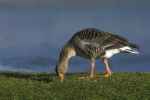 Over
the last few years a range of projects have been undertaken to raise
awareness of local biodiversity. These projects included ‘Know Yours Own
Patch’ awareness-raising projects, Community-led practical projects,
training days, leaflet production, Caithness Biodiversity calendar and
posters and the
Caithness Biodiversity Photo Collection. Over
the last few years a range of projects have been undertaken to raise
awareness of local biodiversity. These projects included ‘Know Yours Own
Patch’ awareness-raising projects, Community-led practical projects,
training days, leaflet production, Caithness Biodiversity calendar and
posters and the
Caithness Biodiversity Photo Collection.
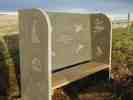 The project also part funded a coastal viewpoint
facility at Swineyhill, Lybster. This project involved a wide section of
the community by including primary school children, high school children
and local residence in the production of the design of the project. A high
sided flagstone bench offers some protection against the elements whilst
encouraging people to sit and enjoy the coastal scenery. Lybster Primary
school children designed images of wildlife to be seen in the area. These
images are sandblasted onto the flagstone. The project also part funded a coastal viewpoint
facility at Swineyhill, Lybster. This project involved a wide section of
the community by including primary school children, high school children
and local residence in the production of the design of the project. A high
sided flagstone bench offers some protection against the elements whilst
encouraging people to sit and enjoy the coastal scenery. Lybster Primary
school children designed images of wildlife to be seen in the area. These
images are sandblasted onto the flagstone.
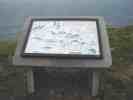 An
interpretive panel offers hints about Seawatching and points out the most
likely encounters species ranging from
cetaceans to seabirds. See
Sea Bird City for sea birds you might see around the Caithness coast An
interpretive panel offers hints about Seawatching and points out the most
likely encounters species ranging from
cetaceans to seabirds. See
Sea Bird City for sea birds you might see around the Caithness coast
In an attempt to keep the momentum going and getting
projects up and running, the Caithness Biodiversity Group have formed.
With funding of £10,000 from Leader+ and Scottish Natural Heritage, the
group is currently taking a small number of projects forward. This group
comprises of community representatives and local staff from relevant
agencies; all with a common interest in Biodiversity and belief it is an
important asset which should be supported and encouraged at local and
national levels.
At present an exciting mix of projects are underway in
the county.
1. Northern Water Vole Survey
Although Caithness is thought to have a healthy population of water voles,
further south the animal is threatened, due to predation by mink and
habitat loss/fragmentation. The population has severely decline in numbers
since the 1920’s. Despite isolated sightings, mink are not believed to be
established in the county and so Caithness may represent one of the few
vital strong hold for the species in Britain. In order to establish base
line figures, a survey to map the distribution of water voles has recently
been completed. Two students from Aberdeen University were funded to
conduct the survey and to help organise an information day to train up
volunteers to continue with the survey in future years. The collected
information will help to produce a strategy safe guarding the population
and make the future of the water vole more certain.
2. Habitat Enhancement Projects
a. Barn Owl Boxes
This project aims to build and erect 4 barn owl boxes. The sites will
be mapped and monitored.
Barn owls are not common in Caithness although seem to be increasing in
numbers. They often use barns, out buildings & tree holes to nest. They
can be prone to disturbance and so will nest only in peaceful places.
b. Small blue butterfly habitat enhancement
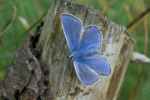 The
most northerly colony of small blue butterflies is located within the dune
system at Dunnet bay. There is some erosion of the site causing a loss of
the food plant kidney vetch. It is proposed that the plants are increased
by purchasing plugs and planting into the ground to increase cover within
the dunes. Another small colony was also discovered and as this is
in shale it is proposed that plants are also put in here to extend the
quantity of kidney vetch to strengthen the habitat. The
most northerly colony of small blue butterflies is located within the dune
system at Dunnet bay. There is some erosion of the site causing a loss of
the food plant kidney vetch. It is proposed that the plants are increased
by purchasing plugs and planting into the ground to increase cover within
the dunes. Another small colony was also discovered and as this is
in shale it is proposed that plants are also put in here to extend the
quantity of kidney vetch to strengthen the habitat.
c. John O Groats Mill Dam
This project aims to restore a wetland habitat by plugging a leak in the
lower section of the dam wall. This will raise the water level and benefit
waders, ducks, swans as well as trout, frogs and toads. A significant
number and variety of birds have been seen on the dam. Water voles have
been seen in the inflowing burn. The dam has been a water feature since
1818. A public road runs alongside the dam and the area is used by
walkers.
John
O'Groats Mill (No Pictures of the dam)
d. Osprey Poles
Ospreys returned to the Highlands in 1955 and are slowly re-colonising the
region. They visit Caithness breeding during the summer months and are
normally associated with water. Ospreys are slowly colonising the county
but provision of a few more suitable nest sites would help as there are
plenty of fish lochs. This awareness raising project will involve school
visits and building mock platforms with children. Two actual sites will be
built for the birds to use.
e. Sand Martin Barrels
Sand martins fly from Africa each summer to nest in sand banks & gravel
pits in Caithness. These habitats are particularly vulnerable to erosion
and whole colonies can be wiped out. This project will build nesting
barrels to provide nesting sites.
The group plan to target other sources of funding to
take forward further Biodiversity projects in the Caithness area. These
projects will be a mix of awareness raising projects, practical projects
to directly benefit biodiversity and also projects which will potentially
have spin off effects for tourism in the area.
Anyone with an interest in Biodiversity should check
out the dedicated webpage on
www.highlandbiodiversity.com/ If you have an interest in the
local Biodiversity group, please contact Barbara Bremner at
Barbara.bremner@snh.gov.uk
Marina Swanson, HC East Caithness Ranger
20/10/05
CAITHNESS AND SUTHERLAND BIODIVERSITY
Biodiversity Photo Collection
Caithness Biodiversity Plan
Sutherland Biodiversity Plan
|

